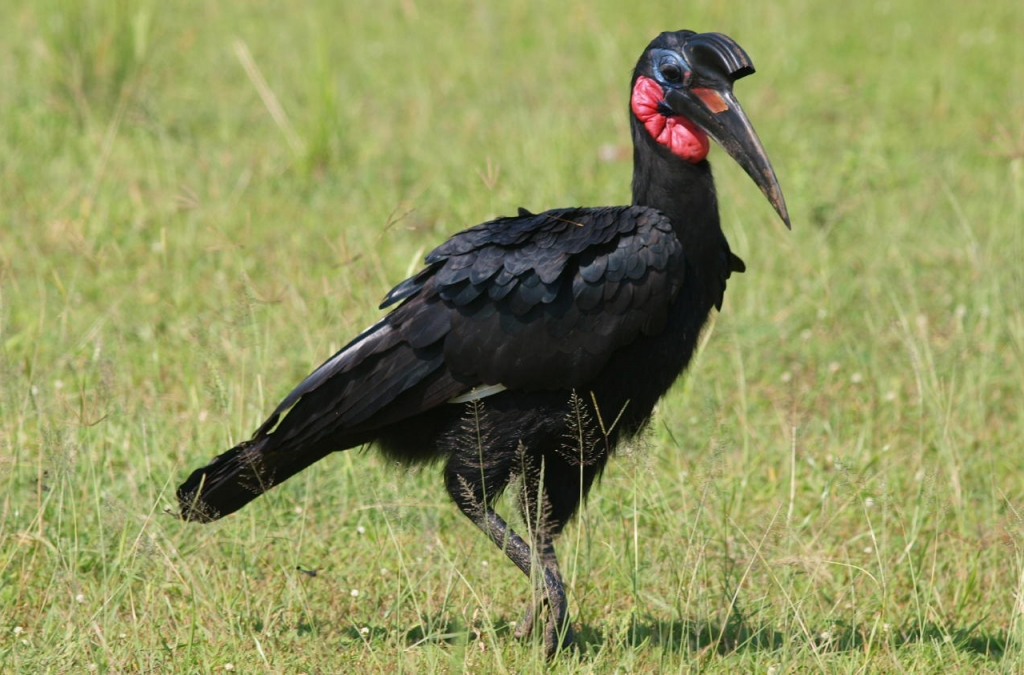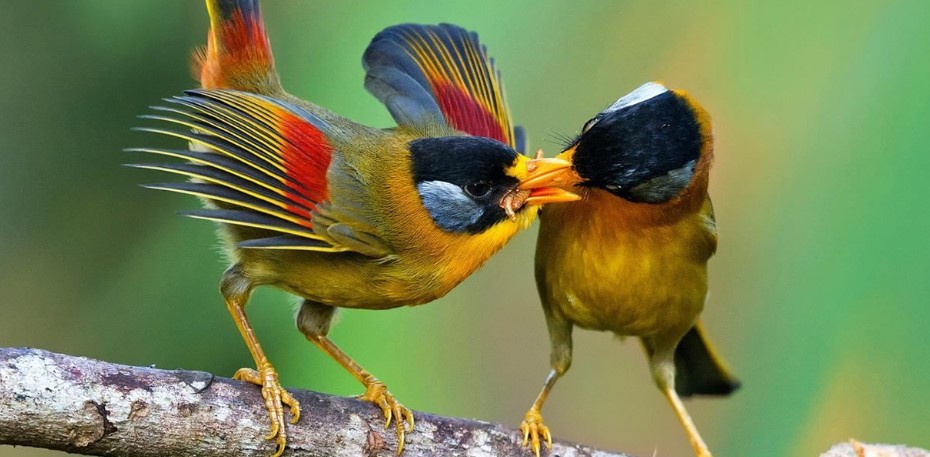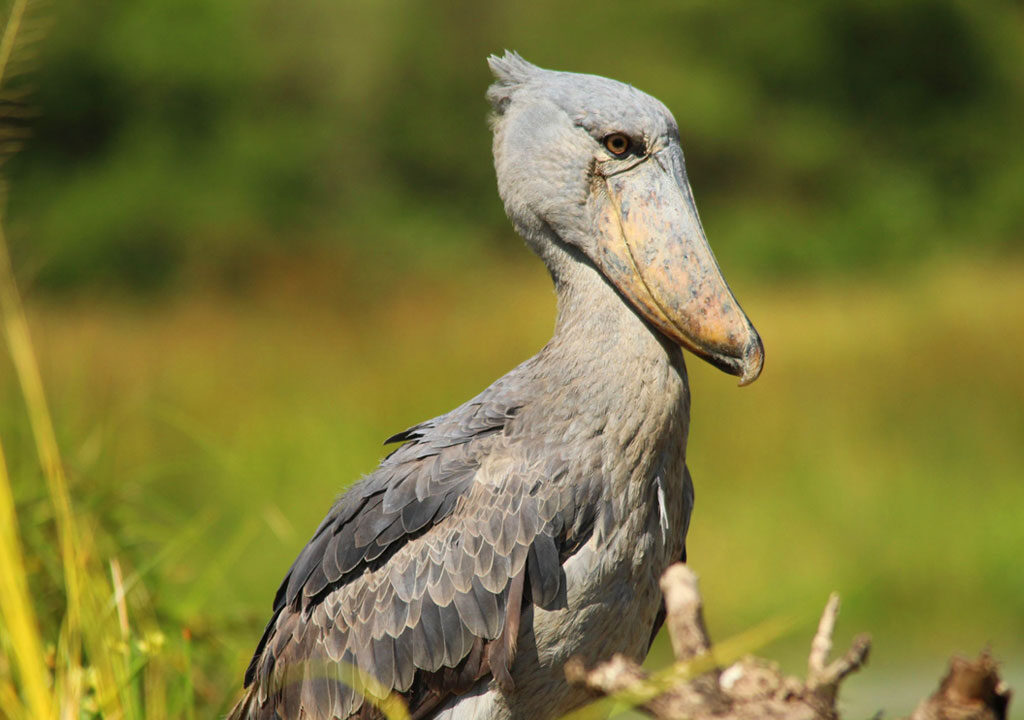Birding in Murchison Falls National Park
Birding in Murchison Falls National Park : Murchison Falls National Park is an impressive Uganda Safari destinations featuring the country’s most dramatic scenery including the most powerful falls, Victoria Nile and vast savanna plains, the park lies at the northern end of the Albertine Rift Valley where bounding escarpments fade into north Uganda’s anonymous expanses.

Murchison Falls National Park is located in Northwestern Uganda about a 311 kilometers (5 hours) drive from Kampala, the park is part of the greater Murchison Falls Conservation Area which included Bugungu Wildlife Reserve, Budongo Forest Reserve and Karuma Wildlife Reserve.
Murchison Falls National Park is the oldest protected area in Uganda, first gazetted as Bunyo – Gulu Game Reserve. During the first half of the 20th Century, the reserve was a hunting playground for the wealth. In 1909, President Theodore Roosevelt famously paid a visit to the region as part of his safari which is the most lavish hunting safari of all time.
Uganda is a birding paradise with many amazing birding spots including Murchison Falls National Park the park is listed among the best bird sports in the country, with over 450 bird species including Albertine Rift Endemic birds, water birds and Savannah birds.

Murchison Falls National Park is widely renowned for the Shoebill Stork, a prehistoric bird that is much sought for, birds species in the park include rare, common and occasional species such as the Grey crowned crater (Uganda’s National Bird), Giant Kingfisher, Giant Heron, Abyssinian Ground Hornbills, Nightjars, Marabou Stork, Black headed lapwing, Black – bellied Bustard among others.
LIST OF SOME OF THE BIRDS FOUND IN MURCHISON FALLS
Shoe bill
MurchisonAfrican Darter
Giant Kingfisher
Osprey
Long-toed Plover
Grey-headed Kingfisher
Veracious Dove
Black-headed Lapwing
Abyssinian Ground Hornbill
Rock Pratincole
Yellow-fronted Tinkerbird
Black-billed Barbet
Long-tailed Nightjarbird
Weaver Birds
Yellow-billed Stork
Martial Eagle
Silver bird
Gray crowned crested crane
Sandpipers
Pied Kingfishers
Standard-winged Nightjar
Malachite Kingfishers
Blue-headed Coucal
Denham’s Bustard
BirdingSwamp Flycatcher
Giant Heron
African Jacana
Secretary Bird
Read-throated Bee eater
Saddle-billed stork
Senegal Thick-Knee
Red winged Grey Warbler
Birding Experience in Murchison Falls National Park
Birds in Murchison Falls National Park can be spotted while on a game drives, nature walks through the savannah grasslands and on the boat cruise along the Nile and on Lake Albert Delta. There are known areas for birding in Murchison Falls National Park and these are along the Albert Delta, Budongo Forest, Buligi Area and Rabongo Forest.
Each of these areas offers birders a chance to spot a range of different bird species and each has their own specials.

When is the Best Time for Birding in Murchison Falls National Park
Birding in Murchison Falls National Park can be done at any time of the year but the best time is from January to March, this is the low tourist season but there is plenty of bird activity. December to February has the least rain, while April to May and August to October have the most rain. The heavy rains might result in delays due to impassable roads and slippery hiking trails and can limit your bird watching time.
Migratory birds are present from November to April
Where to stay while birding in Murchison Falls National Park
While on a safari in Murchison Falls National Park for birding, there are several accommodation options ranging from budget, midrange to luxury. The best options are as follows
- Murchison River Lodge
- Twiga Safari Lodge
- Nile Safari Lodge
- Parkside Safari Lodge
- Heritage Lodge
- Pakuba Safari Lodge
- Paraa Safari Lodge
- Fort Murchison Lodge
- Bwana Tembo Safari Lodge
- Horn Bill Lodge among others
How to Get to Murchison Falls National Park
To get to Murchison Falls National Park from Kampala – the capital of Uganda and starting point for most safaris, you can choose to either fly or use road transport.
By driving, it is a 5 hour journey through Masindi to Paraa Gate, a distance of 297 kilometers. Also the park can be reached by Bugungu Gate using the Hoima to Bulisa Route through Albertine Escarpment the use a ferry crossing for over 35 minutes and 11 kilometers away from the entrance.
By flying, there are domestic flights from Entebbe International Airport and Kajjansi Airstrip to Pakuba Airstrip in the northern sector of the park or Bugungu Airstrip in the southern sector of the park. The flight lasts not more than two hours and require a minimum of four passengers.
WHAT TO CARRY
As plan to go birding in Murchison Falls National Park, remember to carry the following items.
- A pair of binoculars – these are primarily the most important item you should have when going bird watching, binoculars help you see birds from a distance and easily identify them without disrupting them.
- A birder’s guide book – these books always have comprehensive information about birds in a specific area, when to see the birds and help you identify them. For clarity, you can also refer to your birder’s guide book.
- Note book and pen – these two items are very helpful, this is where you note your observations of birds which helps you compare the description of the different bird species.
- A camera – will help you capture those unforgettable birding memories that you can always look at and remind yourself of your birding experience
- Sun glasses and hats– to protect you for the direct sun
- Sturdy shoes (during hikes) – for a comfortable and successful hike, these shoes should be of comfortable fitting and waterproof are the best option.
- Carry enough water for your birding adventure
Guidelines to follow when birding in Murchison Falls National Park
These guidelines where put in place for a safety and enjoyable birding experience, they include
- For clear spotting of the birds always carry a binocular
- Always be quite when searching of birds
- Always be aware of the wild animals which can be close
- Do not throw stones at the birds as it will cause them to change locations and it can also injure them
- When on the trails, do not rush as you may miss spotting most of the birds
- Avoid doing birding in large groups, small groups are ideal as it gives a chance to get clear photos of the birds with no obstruction


